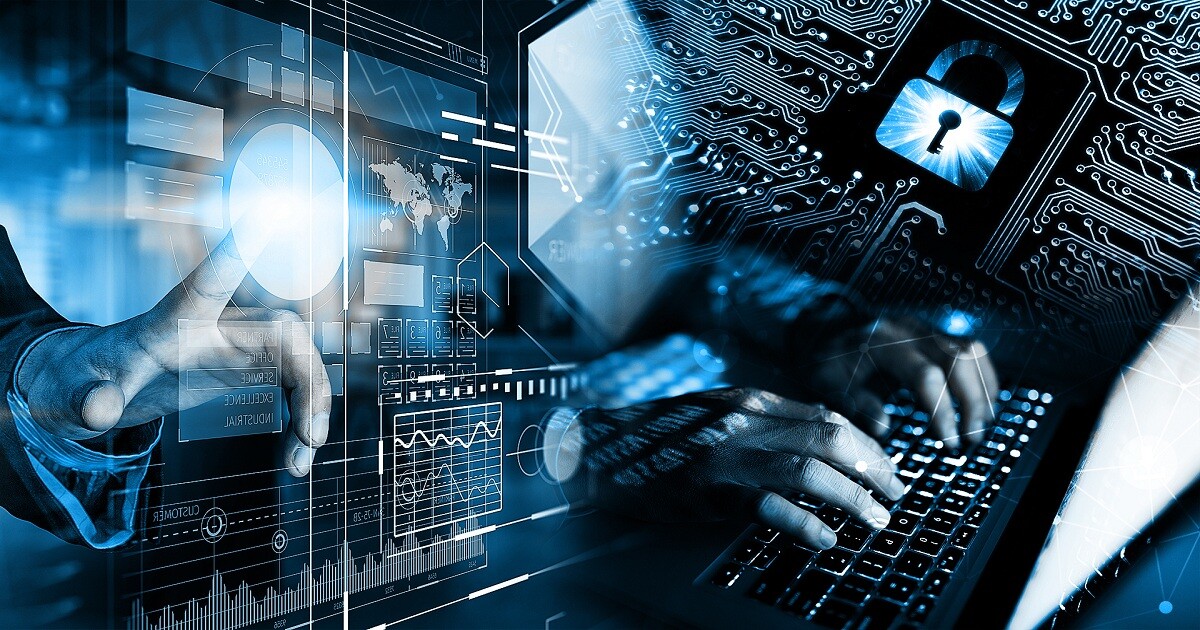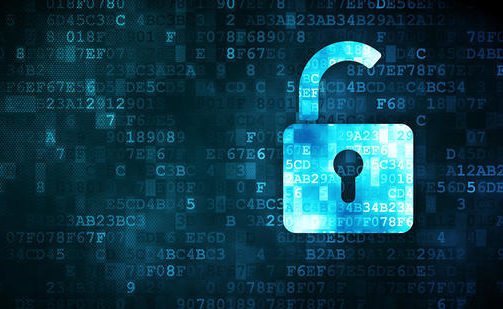What Are the Most Effective Strategies for Cyber Security?

In the modern digital world, cybersecurity has become a top priority for individuals, businesses, and governments alike. With the increasing frequency of cyberattacks, data breaches, and privacy concerns, the need to protect sensitive information has never been more pressing. As the world becomes more interconnected through technology, the threat landscape continues to evolve, making it crucial to stay ahead of potential risks.
Cybersecurity involves protecting systems, networks, and programs from digital attacks, data breaches, and unauthorized access. Implementing effective cybersecurity strategies is key to safeguarding sensitive information and ensuring the integrity and privacy of users. In this article, we will explore the most effective strategies for cybersecurity, covering a range of practices and technologies that can help mitigate risks and enhance security.
1. Develop a Strong Cybersecurity Framework
One of the first steps in building an effective cybersecurity strategy is to establish a strong cybersecurity framework. A framework outlines the policies, procedures, and technologies necessary to protect an organization’s digital assets and data. It helps organizations identify vulnerabilities and prioritize resources to address security risks.
A well-structured cybersecurity framework should be built on the following principles:
- Risk Assessment: Conducting regular risk assessments to identify potential threats and vulnerabilities is essential for developing effective cybersecurity policies. By evaluating the likelihood and potential impact of different cyber risks, businesses can allocate resources to areas with the highest risk.
- Asset Inventory: Identifying and cataloging all hardware and software assets within an organization is crucial for ensuring that all systems are secured. Regular audits should be conducted to ensure the accuracy of the asset inventory.
- Incident Response Plan: Developing a comprehensive incident response plan is essential in case of a cyberattack or data breach. The plan should include guidelines for identifying, containing, and mitigating the effects of the attack, as well as a clear communication strategy to inform stakeholders.
- Continuous Monitoring: Implementing continuous monitoring of network activity is vital for detecting potential threats early. Intrusion detection systems (IDS) and intrusion prevention systems (IPS) can help identify malicious behavior and prevent attacks in real time.
2. Use Multi-Factor Authentication (MFA)
Multi-factor authentication (MFA) is a security process that requires users to provide two or more forms of identification before gaining access to a system or application. MFA significantly enhances security by adding an extra layer of protection against unauthorized access, even if a user’s password is compromised.
The most common forms of MFA include:
- Something You Know: This typically refers to a password or PIN.
- Something You Have: This can be a smartphone, hardware token, or smart card that generates a one-time passcode.
- Something You Are: This refers to biometric authentication, such as fingerprint scanning or facial recognition.
By using MFA, organizations and individuals can dramatically reduce the risk of account compromises, as attackers would need to bypass multiple layers of authentication to gain access to sensitive information.
3. Regularly Update Software and Patch Vulnerabilities
Software vulnerabilities are one of the most common entry points for cybercriminals. Attackers often exploit known security flaws in software programs to launch attacks, such as malware infections or data breaches. To protect against these threats, it is essential to regularly update software and apply security patches as soon as they are released.
Updating software ensures that the latest security features and fixes are installed, closing any gaps that could be exploited by attackers. This includes operating systems, applications, web browsers, and any third-party software used by an organization. Enabling automatic updates can also help ensure that systems are always up to date.
In addition to updating software, it’s important to regularly audit systems for outdated software that may no longer receive security patches. Unsupported software should be replaced or retired to minimize security risks.
4. Educate Employees About Cybersecurity Best Practices
Human error is one of the leading causes of cybersecurity breaches. Employees may unknowingly click on phishing emails, download malicious attachments, or use weak passwords, all of which can compromise an organization’s security. Educating employees about cybersecurity best practices is essential for reducing the risk of these types of attacks.
Effective cybersecurity training should cover the following:
- Phishing Awareness: Employees should be trained to recognize phishing emails and suspicious links. They should know how to report such incidents and avoid interacting with malicious content.
- Password Management: Employees should be encouraged to create strong, unique passwords for each system and account. Password managers can help employees store and manage passwords securely.
- Safe Browsing Habits: Employees should be educated about safe browsing practices, such as avoiding unsecured websites and ensuring that websites they visit use HTTPS encryption.
- Social Engineering Tactics: Employees should be aware of social engineering tactics used by cybercriminals to manipulate individuals into divulging sensitive information.
Regular cybersecurity awareness training should be provided to employees to ensure they remain vigilant against emerging threats. Additionally, organizations can simulate phishing attacks to test employee awareness and reinforce learning.
5. Implement Encryption for Data Protection
Encryption is a vital strategy for protecting sensitive data, both at rest (when stored) and in transit (when transmitted over networks). Encrypting data ensures that even if an attacker gains access to the data, they will not be able to read or use it without the decryption key.
There are various encryption methods available, including:
- End-to-End Encryption: This ensures that data is encrypted at the sender’s end and only decrypted by the intended recipient, making it difficult for hackers to intercept and read the data.
- Disk Encryption: Encrypting hard drives and storage devices prevents unauthorized access to data if the physical device is stolen or compromised.
- Transport Layer Security (TLS): TLS encryption is commonly used to secure communication between web browsers and servers, protecting sensitive data transmitted over the internet.
By implementing encryption, organizations can safeguard confidential information, including customer data, financial records, and intellectual property, from unauthorized access.
6. Backup Critical Data Regularly
Regularly backing up critical data is essential for protecting against data loss, whether caused by cyberattacks, hardware failures, or natural disasters. Having secure and up-to-date backups ensures that, in the event of a ransomware attack or other data-loss incident, organizations can quickly recover their systems and minimize downtime.
There are several best practices for data backup:
- Automate Backups: Set up automated backup systems to ensure that critical data is regularly backed up without the need for manual intervention.
- Use Offsite or Cloud Backups: Store backups in a secure offsite location or in the cloud to protect against physical damage to servers or equipment.
- Test Backup Restoration: Regularly test the restoration process to ensure that backups can be successfully restored in case of an emergency.
Having reliable backups in place ensures that organizations can recover from cyberattacks and other disruptions without significant data loss or operational downtime.
7. Conduct Regular Security Audits and Vulnerability Assessments
Regular security audits and vulnerability assessments help organizations identify and address weaknesses in their systems before cybercriminals can exploit them. These assessments involve testing the security of networks, applications, and infrastructure, looking for potential vulnerabilities such as unpatched software, weak passwords, or misconfigured firewalls.
Penetration testing (or ethical hacking) is another useful strategy for assessing the effectiveness of security measures. In penetration testing, security professionals attempt to hack into the system in order to identify vulnerabilities from the perspective of a potential attacker.
By regularly conducting security audits, organizations can stay ahead of emerging threats and continuously improve their cybersecurity posture.
FAQs About Cybersecurity Strategies
- What is the most important cybersecurity strategy for businesses? One of the most important strategies is to develop a robust cybersecurity framework that includes risk assessments, incident response planning, and continuous monitoring. Additionally, regular employee training and software updates are essential.
- Why is multi-factor authentication (MFA) important? MFA adds an extra layer of security by requiring users to provide two or more forms of authentication. This significantly reduces the risk of unauthorized access, even if a password is compromised.
- How often should software be updated for security? Software should be updated as soon as security patches and updates are released. Enabling automatic updates is a good practice to ensure systems stay current with the latest security fixes.
- What are some common signs of a phishing attack? Common signs of phishing include unsolicited emails, suspicious links, grammar errors, and requests for sensitive information. Employees should be trained to recognize these signs and report suspicious emails.
- What is the role of encryption in cybersecurity? Encryption protects sensitive data by making it unreadable to unauthorized users. It ensures that data remains secure both at rest and in transit, preventing data breaches and unauthorized access.
- How can organizations protect data from ransomware attacks? Regular data backups, strong security policies, and employee training are essential for protecting against ransomware. It is also important to maintain up-to-date software and use endpoint security tools.
- What is penetration testing, and why is it important? Penetration testing is an ethical hacking exercise where security experts attempt to exploit vulnerabilities in a system to identify weaknesses. It helps organizations understand how attackers might breach their systems and allows them to fix vulnerabilities before they are exploited.
Conclusion
Cybersecurity is an ongoing process that requires constant vigilance, the adoption of best practices, and the use of advanced technologies to protect systems, data, and networks from malicious threats. The most effective strategies for cybersecurity involve a combination of proactive measures, such as implementing strong frameworks, using encryption, educating employees, and regularly updating software, along with continuous monitoring and threat detection.
As cyber threats continue to evolve, organizations and individuals must remain vigilant and adapt to the changing landscape. By following these strategies, you can significantly reduce the risk of cyberattacks and safeguard sensitive data from potential breaches.
Key Takeaways
- Establishing a strong cybersecurity framework is critical for protecting digital assets.
- Multi-factor authentication (MFA) adds an additional layer of protection to secure accounts and systems.
- Regular software updates and patching are vital for closing vulnerabilities.
- Employee education and training on best cybersecurity practices are essential to prevent human error.
- Encryption ensures the protection of sensitive data both at rest and in transit.
- Regular security audits and vulnerability assessments help identify and address security gaps before they can be exploited.
- Implementing effective incident response plans and backing up data regularly ensures recovery in the event of an attack or disaster.




Leave a Comment